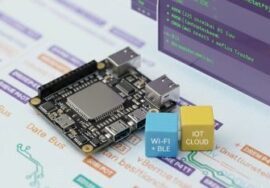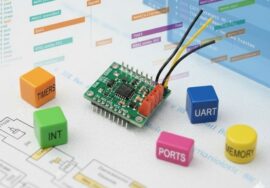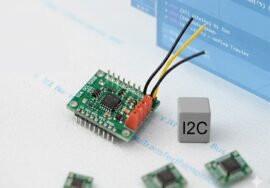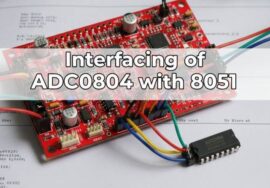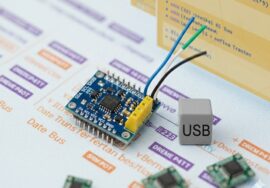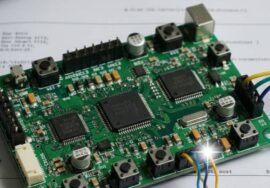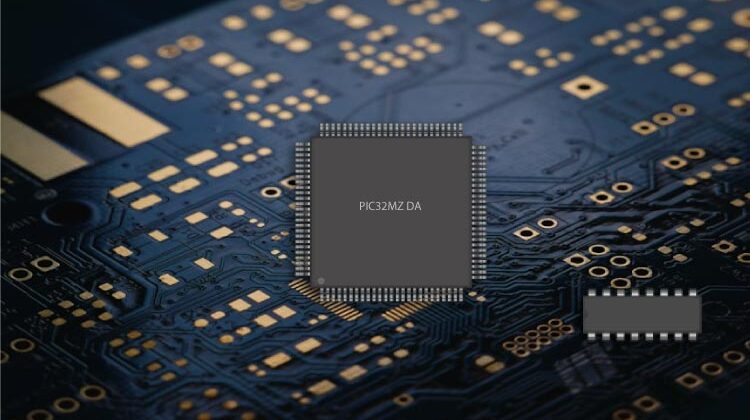
PIC Microcontrollers with Integrated FPGA Features
PIC Microcontrollers with Integrated FPGA Features
Microcontrollers have long been the cornerstone of embedded systems, offering efficient control for a variety of applications. With the integration of Field Programmable Gate Arrays (FPGAs) in microcontroller architectures, designers now have access to unparalleled flexibility and performance. Microchip Technology, a leader in microcontroller innovation, has developed solutions that seamlessly combine the features of PIC microcontrollers with FPGA technology, enabling advanced application development.
What are FPGAs and Why Integrate Them with Microcontrollers?
FPGAs are semiconductor devices that can be configured to perform custom hardware logic functions. Unlike traditional microcontrollers with fixed hardware functionalities, FPGAs can be reprogrammed to accommodate specific application needs, offering:
- Parallel Processing: Efficient handling of multiple tasks simultaneously.
- Custom Peripheral Design: Tailored logic blocks for unique project requirements.
- High Performance: Real-time operation for complex computations.
- Reconfigurability: Ability to update hardware functionality without redesigning the physical circuit.
Key Features of PIC Microcontrollers with FPGA Integration
Microchip’s offerings in this space, such as the PolarFire SoC and the PIC32MZ DA family, combine the best of microcontroller and FPGA technologies. Notable features include:
- Hybrid Architecture: Integration of traditional PIC microcontroller cores with FPGA fabric to offload complex logic operations.
- Embedded Security: FPGA-based designs provide enhanced security features, making them ideal for industrial and defense applications.
- Power Efficiency: Optimized power consumption to suit embedded applications.
- High-Performance Interfaces: Support for high-speed communication protocols and peripherals.
Advantages of FPGA-Enabled PIC Microcontrollers
- Reduced System Complexity: A single chip with both MCU and FPGA features reduces component count and board space.
- Real-Time Performance: FPGA logic allows low-latency operations, crucial for time-sensitive applications.
- Cost-Effectiveness: Eliminates the need for separate FPGA and microcontroller components, reducing overall system cost.
- Scalable Designs: Developers can use the same platform for diverse applications by reprogramming the FPGA portion.

Applications of PIC Microcontrollers with FPGA Features
- Industrial Automation:
- Real-time control and monitoring systems.
- High-speed data acquisition for predictive maintenance.
- Embedded Vision:
- Real-time image and video processing for surveillance and quality control systems.
- Signal Processing:
- High-performance DSP operations for audio and communication applications.
- Automotive Systems:
- Advanced driver assistance systems (ADAS) requiring rapid decision-making.
- Communication Protocols:
- Custom protocol implementation for efficient and secure data transmission.
Development Tools and Ecosystem
Microchip provides a comprehensive set of development tools to support PIC microcontrollers with FPGA integration:
- MPLAB X Integrated Development Environment (IDE): Simplifies firmware development and debugging.
- Libero SoC Design Suite: Enables FPGA design and integration with the microcontroller.
- Evaluation Kits: Hardware development platforms for rapid prototyping.
Conclusion
PIC microcontrollers with integrated FPGA features represent a significant advancement in embedded system design. By combining the flexibility of FPGA technology with the efficiency of traditional microcontrollers, these devices empower engineers to develop sophisticated and high-performance applications. As industries demand increasingly complex and adaptable solutions, this hybrid approach offers a future-proof path for innovation.



